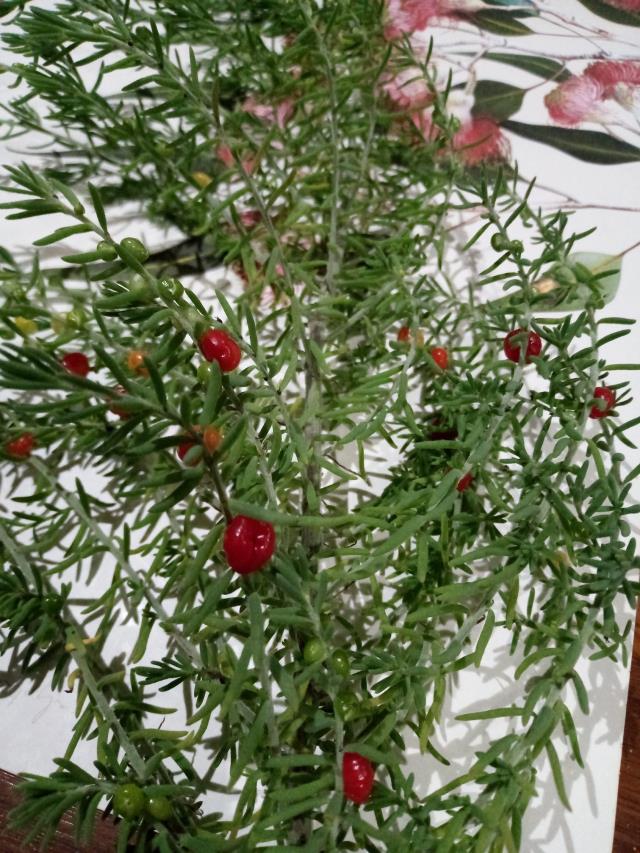By Beatrice Hawkins
Over the last week I have had a drive to Tamworth and what a delight to see the change in the country.
It’s been quite a while since I drove south and as I came into the Summit there on the left was a paddock filled with multi-coloured cosmos. It was absolutely beautiful. They are native to Mexico and southern areas of America and were named “cosmos” using the Greek word for “harmony or ordered universe” by Spanish priests because of their evenly-placed, orderly petals.
The spectacular riot of multi coloured blooms in the paddock by the roadside is anything but ordered but is certainly harmonious! It is a sight well worth the short drive to see. Others have told me that they have seen people in there harvesting the flowers, maybe for the floristry trade. Perhaps they weren’t just planted to please passers-by!
Further down the trees had their autumn colours on show – deep claret ash, red gold liquid amber, brilliant gold poplars, red oaks, some that still had green contrasting with the red that had already turned – a truly a heart-warming sight.
How lucky we are to live in an area where we are able to enjoy the definite change in the seasons. It may not be so obvious in Warwick but it certainly is a short drive away in the Stanthorpe area.
I have had a plant growing in my garden for some time that I had no real idea of what it was or where it came from. It didn’t appear to be a weed so I left it growing where it came up… after all, as is so often said, “a weed is only a plant or of place”. This one fitted in quite nicely and for some time I have enjoyed the contrast of the fine soft blue grey foliage against the strappy dark green leaves of the hippeastrums. Lately it has become a bit unruly and untidy and I thought it was time it went. It had tiny insignificant creamy white flowers and had recently developed small decorative soft red berries.
I have some family members who are experts in all things botanical so I sent off a few pictures and asked for clarification. It looked as if it could be a western area herbage plant and maybe really good stock feed, but I had no idea how or where it had come from into my garden.
After consultation it has been determined that it is “ruby salt bush” so I was right about its value as stock feed and where it might grow.
My brother just happened to still have, from his early studies into saltbush, a copy of volume 4 of “Flora of Australia” with pictures and information on this plant and sent me a link. His first suggestion, on seeing the photos, was that it was the plant that original Australians may have given to Burke and Wills to try and save them.
The botanical name is “Enchylaena tomentosa” and has long been a sought after food source by Indigenous Australians, early settlers and livestock. It is a perennial plant, highly drought tolerant, suitable to a wide range of soils and found over a wide area of Australia from the east to the Kimberly. The first known specimens collected by Europeans, were in the Brisbane river area in July 1855. It apparently prefers soils that are slightly saline, so maybe useful for regenerating areas of salt degradation. It likes well drained soil, full sun and is tolerant of at least moderate frost and is easily grown from seed or cuttings. Sounds like a perfect garden plant for our area.
The fruit has a slightly salty taste apparently, however, after writing on the toxicity of garden plants recently, I haven’t tried them! The leaves are edible but best eaten cooked, or sparingly when fresh, as they are high in oxalates. Kept clipped, as it would be in its natural state with grazing animals, it would be a very attractive small shrub. Maybe I shouldn’t have pulled it out after all!
I have some very old gidgee posts in my garden that came from well out west in our state and an errant seed must have been clinging to these is my only suggestion as to how the plant ended up in my garden.
I know seeds have fallen from this one so hopefully it will come again next year and now that I know what it is, it will be encouraged and propagated from cuttings. I have used some sprays in a flower arrangement and will try and see if I can get it to grow from these. With my notoriously “brown thumbs” I don’t have a real lot of hope. This one has survived and even flourished, in my garden with minimal care so who knows?
It is great to see the change in my garden and lawn that the rain has brought and I really don’t mind having to cut the kikuyu every few days!
*This is an old article that has been digitised so our readers have access to our full catalogue







